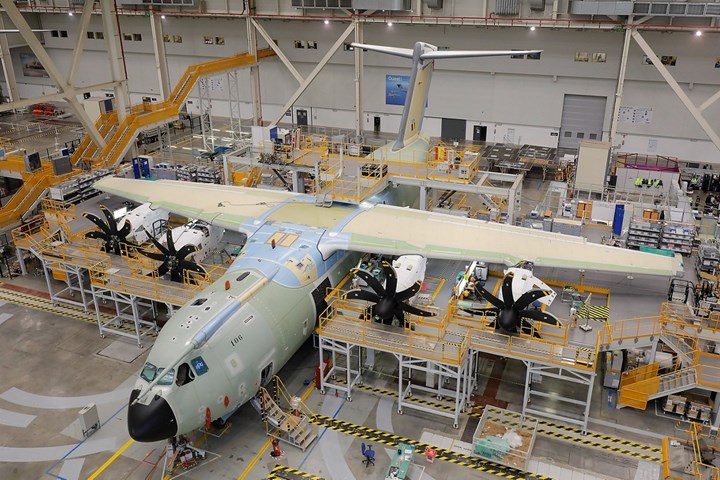Airbus delivers first A400M to the Belgian Air Force
Despite challenges caused by the pandemic, Airbus’ teams have achieved all 10 aircraft deliveries scheduled this year, bringing the A400M global fleet in operation to 98 aircraft.
Share

Photo Credit: Airbus
It was reported on Dec. 22 that the Belgian Air Force has taken delivery of its first of seven Airbus A400M military transport aircraft, a structure which makes use of several carbon fiber composite parts. The aircraft was handed over to the customer at the A400M Final Assembly Line (FAL) in Seville, Spain, and subsequently performed its ferry flight to the 15th Wing Air Transport in Melsbroek, Belgium, where the aircraft will be based.
Th delivered A400M, known as MSN106, will be operated within a binational unit composed of a total of eight aircraft, seven from the Belgian Air Force and one from the Luxembourg Armed Forces. The second A400M for Belgium will be delivered in early 2021.
“With the delivery of this aircraft all launch customers are now equipped with the A400M,” says Alberto Gutierrez, head of Military Aircraft at Airbus Defence and Space. “MSN106 will join Luxemburg’s aircraft in the binational unit operated jointly with Belgium. Despite challenges due to COVID-19, our teams have achieved all 10 aircraft deliveries scheduled this year, bringing the global fleet in operation to 98 aircraft.”
Related Content
-
Plant tour: Middle River Aerostructure Systems, Baltimore, Md., U.S.
The historic Martin Aircraft factory is advancing digitized automation for more sustainable production of composite aerostructures.
-
Next-generation airship design enabled by modern composites
LTA Research’s proof-of-concept Pathfinder 1 modernizes a fully rigid airship design with a largely carbon fiber composite frame. R&D has already begun on higher volume, more automated manufacturing for the future.
-
Cryo-compressed hydrogen, the best solution for storage and refueling stations?
Cryomotive’s CRYOGAS solution claims the highest storage density, lowest refueling cost and widest operating range without H2 losses while using one-fifth the carbon fiber required in compressed gas tanks.












